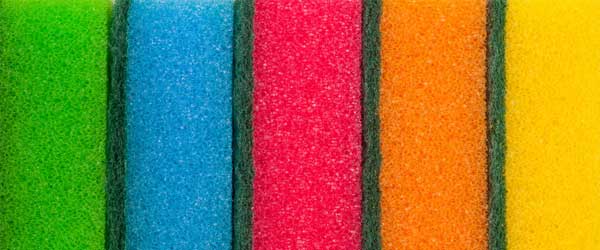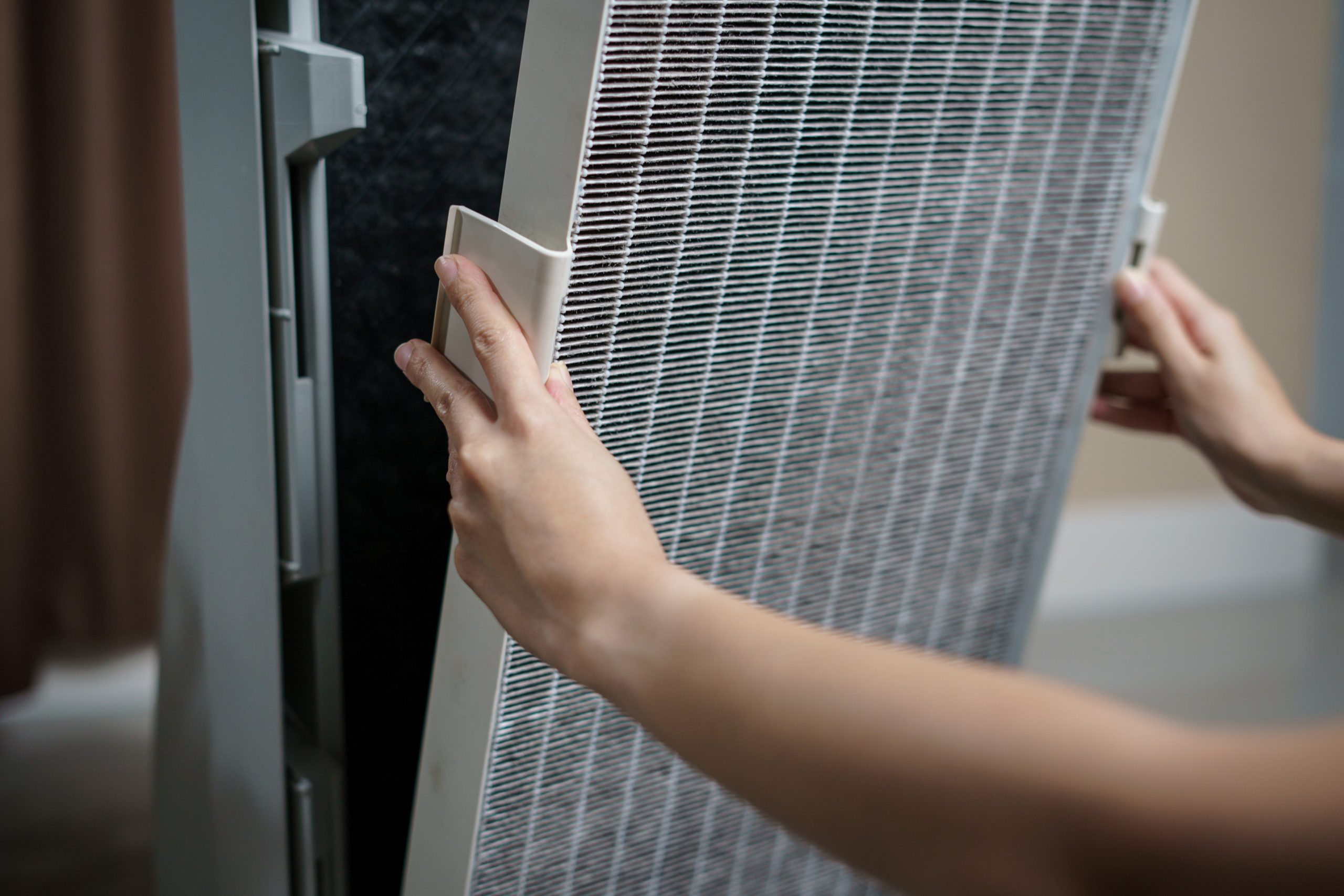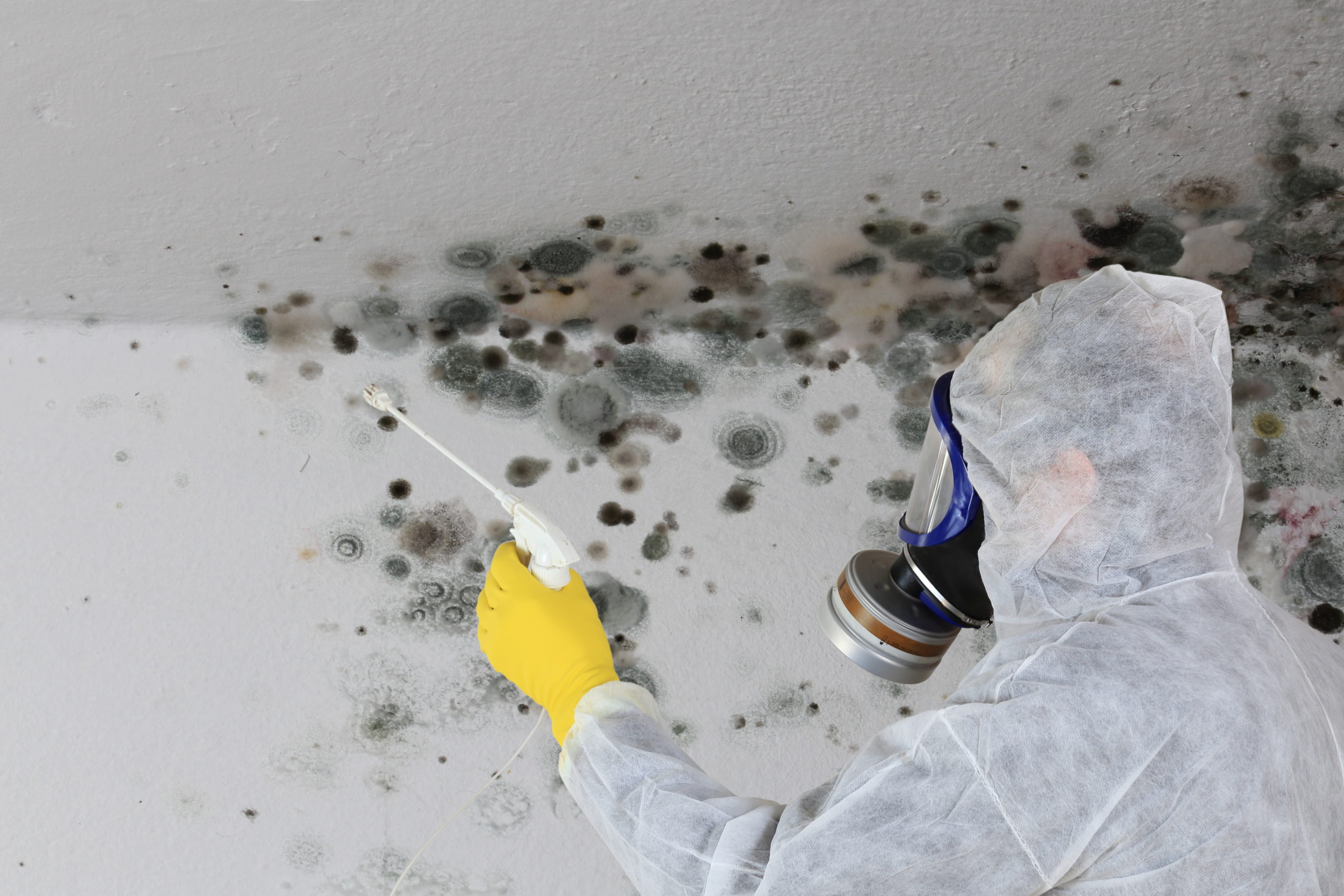The low cost and absorption power of sponges may be outweighed by the time and risk of decontaminating them properly between jobs.
Sometimes we spend so much time looking at new (and old) tools to add to our arsenal of cleaning tools that we forget to review the ones we already have – to make sure they really are the most effective tool and aren’t costing us money. In Part 1 of “Get This Tool Out of Your Caddy Fast,” I shared why feather dusters can be the most expensive tool in your caddy, even as they are a romantic throwback and an easily recognized symbol of cleaning. Here in Part 2, I take a hard look at “sponges” and their value in your cleaning caddy.
The Germiest Item in the House
I started seeing research from the University of Arizona’s Dr. Charles Gerba in early 2000 that indicated the common household sponge used for cleaning was usually the germiest item in the house. We removed them from our caddies at Castle Keepers of Charleston soon thereafter.
The porousness that makes the sponge so versatile and able to quickly absorb liquid and wipe away messes also makes it a perfect home for teeming masses of yeasts, molds and frequently pathogenic bacteria. It doesn’t matter the type of sponge you use; when exposed equally to the same germ culture, all types of sponges, even natural ones, grow bacteria at the about the same rate.
Kitchen safety experts regularly advise that homeowners and especially professional kitchens never use sponges to clean and sanitize countertops. In addition to the increased risk of spreading more germs than removing, most home sponges have dish detergent on them, which may cause long-term damage to natural stone countertops.
De-Germing Sponges
A 2007 study by USDA researchers tested several different ways to clean dirty sponges in order to reduce risks from harmful microbes hiding in household sponges. They soaked some dirty sponges in 10% bleach, lemon juice or deionized water for one minute; they put other dirty sponges in a dishwasher with a drying cycle, or they heated dirty sponges in a microwave on high for one minute.
While the treatments with bleach, lemon juice and deionized water knocked out molds and yeasts, they still left significant amounts of bacteria in the sponges. Washing the sponges in a dishwasher with a drying cycle and microwaving the sponges for one minute both killed greater than 99% of all germs present, with the microwave killing a smidgen more than the dishwasher treatment.
Reducing Cross-contamination with Sponges
So how do you translate this to a residential cleaning business setting? Using a dishwasher to clean sponges isn’t realistic, so let’s knock that one out immediately.
Is microwaving a realistic option? Several things to keep in mind:
• The sponges must be wet when microwaved or they’ll catch fire. Good training point.
• The study was performed by microwaving one sponge in the microwave at a time for one minute (microwave used in the study had 1,100 watts, 2459 MHz and a rotating glass plate). You’ll be guessing at how effective microwaving will be at killing germs on the sponge if you put more than one in at a time or if you increase the time to compensate. Definitely don’t crowd them.
• The sponges are almost as hot as molten lava when they come out of the microwave, so great care (and probably tongs) should be used when removing them.
• They need to be placed in a well ventilated area so they dry quickly, or throw them in a dryer. The longer they take to dry, the higher the risk they’ll grow more bacteria.
Though the microwave method achieves good and scientifically-validated results, the added time and risk of burn injuries may be more than you can afford.
More Cost and Time Effective Choices
Professional residential cleaning tools need to be rugged in order to hold up to the tough treatment we give them. Although they’re cheap, sponges rip and tear easily with regular use. Add frequent washing to keep them sanitary to that, and they might only last a couple of days out in the field.
In addition, IFH International Scientific Forum on Home Hygiene suggests that some food-borne bacteria require up to five minutes on high in the microwave to be effectively killed. Microwaving sponges in large numbers for use in a residential cleaning business has always seemed a suspect methodology (more guesswork than science), and more trouble than they’re worth, especially when there are better, more durable and sanitary options.
If you want to use sponges in a professional capacity, these recommendations from IFH International Scientific Forum on Home Hygiene – Information & Hygiene Advice Sheet; “Kitchen hygiene in the home” might be useful:
Cleaning cloths [and sponges] can easily spread microbes around the kitchen. They should be hygienically cleaned after each use. This can be done in any of the following ways:
- wash in a washing machine at 60C/140F (hot wash)
- clean with detergent and warm water, rinse and then immerse in disinfectant solution which is effective against bacteria and viruses for at least 20 minutes, or as prescribed on label
- clean with detergent and water then immerse in boiling water for 20 minutes
Be certain the weigh the benefits of continuing to use sponges against the cost in time and effort to maintain them in an hygienic and safe manner for your techs to use and for minimization of cross-contamination within a client’s home and between clients.
Watch for Part 3 of “Get These Tools Out of Your Caddy, Fast,” when I’ll examine the evolution of the cleaning “rag” into cloths designed for removing soil, not just wicking water.
Janice Stewart is the owner of Castle Keepers of Charleston and driving force behind the development of the Modern Cleaning approach, Janice brings her scientific and healthcare background to inform the development of effective, safe, and healthy cleaning methods.





